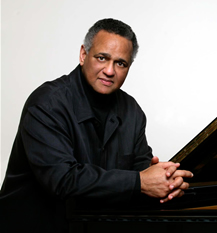The return of the Classical Concert Series from the spacious Owens Auditorium on the Sandhills Community College campus to the intimate Sunrise Theater across from Southern Pine’s restored historic train station has been a two-edged sword. The series sells out on subscription, leading to waiting lists for popular performers such as pianist Wendy Chen who will close this season in March. The cozy ambiance seems to encourage artists to give their best, exploiting the hall’s dynamic capacity while inviting a player’s most subtle phasing.
Such was the case for the concert given by Efe Baltacigil, associate principal cellist of the Philadelphia Orchestra, and pianist Anna Polonsky. Born in Istanbul, Turkey, Baltacigil received extensive press coverage when he and pianist Emanuel Ax performed Beethoven’s First Cello Sonata with only ten minutes of rehearsal when a snowstorm prevented most of the Philadelphia Orchestra musicians from making it to the scheduled concert. Baltacigil was a winner of the 2005 Young Artists Auditions. Polonsky emigrated from Russia to the U.S. in 1990 and continued her studies at the high school at the Interlochen Arts Academy in Michigan. She graduated from The Curtis Institute of Music, and received her Master’s Degree from the Juilliard School.
Refined tone and impeccable musicianship were evident from the opening work, J.S. Bach’s Sonata No. 1 in G, S.1027. The work was originally a trio sonata for two flutes and keyboard (S.1039) composed in 1720. In the 1730s, Bach arranged it for viola da gamba and continuo with the gamba and the right hand part of the keyboard taking the music for the two flutes and the left hand playing the bass line. It is often heard in the transcription for cello played by Baltacigil. He played the opening with a wonderfully light touch, creating a seamless melodic line and a warm and mellow tone. Articulation was clear and trills were beautifully executed. With the Steinway piano’s lid fully up, Polonsky kept her sound in perfect balance while never neglecting to exploit the palette of colors available.
Shostakovich’s Sonata for Cello and Piano, Op. 40, dates from the period in 1936 when the composer came under attack in Pravda for composing “bourgeois” music in such works as his opera Lady Macbeth of Mtsensk. Like most of the composer’s chamber music, it is a profound and deeply personal work. Baltacigil brought out the elegiac quality of first theme as well as the full romantic tone of the second theme. Both players reveled in the witty rhythmic twists of the waltz-like scherzo. The cellist’s ability to weave a continuous legato helped lay bare the composer’s anguish and pain in the Largo. Both artists smiled with delight as they exchanged jazz-like elements while momentum was built up in the finale.
Ahmet Adnan Saygun (1907-91) was a Turkish composer, conductor, and ethnomusicologist. He traveled throughout Turkey conducting extensive research into folk music and he collaborated with Bartók. He was the first Turkish composer to compose operas after the foundation of the secular republic by Mustafa Kemal Ataturk. His efforts to combine local traditions and Western models gave a focus to Saygun’s development of his musical language.
Saygun’s Sonata for Cello and Piano, Op. 12, was composed in 1935 and is in three movements: Animato, Largo, and Allegro assai. It is hard to fully comprehend all aspects of a work when heard for the first time, especially one with elements more distant from the central European tradition. All cellists will love this work. It abounds in long-breathed melodic lines, rather like a cheerful Rachmaninoff. There are some lovely folksong-like themes. At least upon first hearing, the very independent piano part seems almost like another work being played at the same time. There were some quirky rhythmic elements and something that sounded like tone clusters. The two instrumental parts do clearly dovetail but the overall impression of independence dominated. The sonata is definitely intriguing.
César Franck’s Sonata in A, M.8, was originally composed for violin and piano but also has long been “abducted” into the cello repertoire. It has a “hot house” atmosphere of passions, and the work is developed cyclically from the germ cell of the first three notes. Baltacigil’s glowing tone, immaculate intonation, and ability to spin a continuous melodic line contributed to the finest live performance that I have yet heard of the cello version of this work. His fingers never slipped and his bow never slipped its aim. Performances are too often played with the piano lid set low, yielding a muffled sound. Here with the piano’s lid fully raised, Polonsky conjured up a broad kaleidoscope of keyboard color throughout the performance. I would relish hearing her in a solo recital with such French repertoire as Chabrier, Fauré, Debussy, and Ravel.











